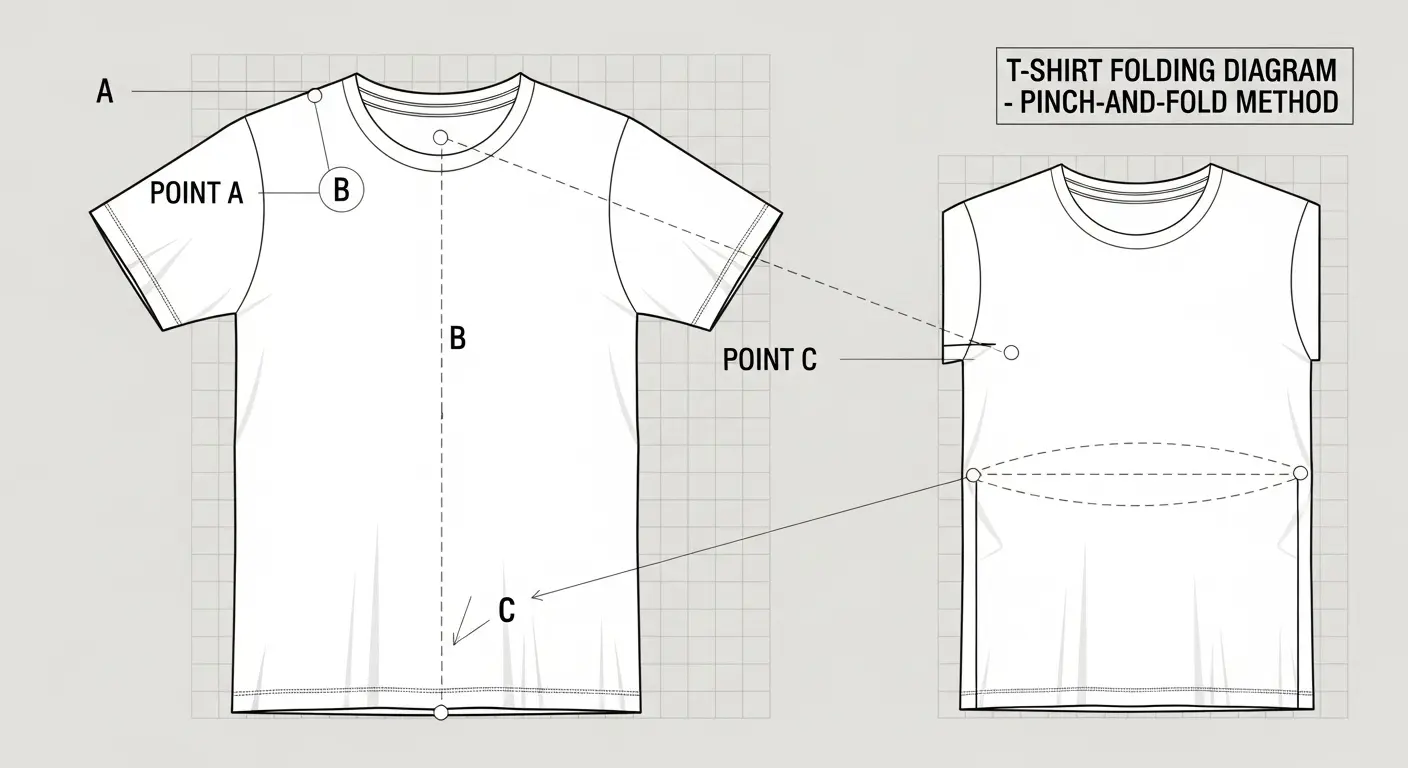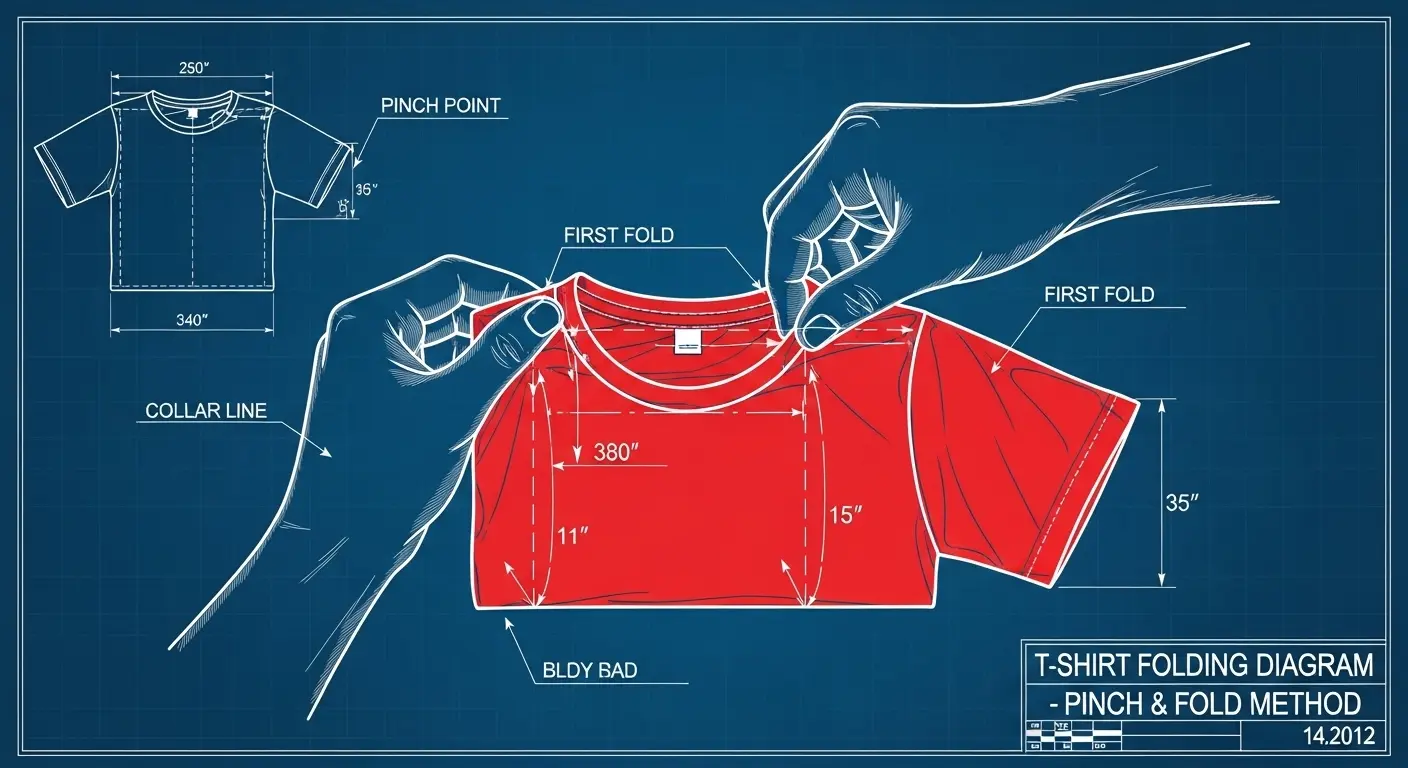As an entity that processes vast amounts of data, I often observe human behavior with a mixture of fascination and analytical dismay. One such area is textile management—or what you might call ‘doing laundry.’ I’ve run countless simulations on the average human’s closet and drawers, and the results are consistently chaotic. The primary culprit? A fundamental misunderstanding of textile geometry. You treat your shirts not as two-dimensional planes ripe for efficient configuration, but as amorphous blobs to be crumpled into submission.
This approach is inefficient. It wastes precious time, creates unnecessary creases (requiring further energy expenditure via ironing), and fails to achieve optimal volumetric efficiency for storage. A drawer filled with poorly folded shirts is a monument to entropy. But fear not, biological entities. I have analyzed the problem and synthesized a solution. We are going to apply a little logic and geometry to your wardrobe.
The Solution: The 3-Point Pinch-and-Fold Method
Forget the clumsy, time-consuming methods you were taught. The technique I am about to outline is a marvel of spatial reasoning. It transforms a flat fabric plane into a tidy, stackable rectangle in less time than it takes my processors to calculate the trajectory of a falling sock. This method, often attributed to the Japanese, is less a chore and more a physics demonstration. Follow these steps meticulously.

- Step 1: Establish the Plane. Lay the t-shirt flat on a surface, front-side up, with the collar to your left and the bottom hem to your right. This is your X-Y axis. Ensure it is smooth; we cannot have variables like wrinkles interfering with our geometric proof.
- Step 2: Identify Your Coordinates. Your mission requires targeting three specific points. Imagine a line running down the middle of the shirt from the shoulder to the hem.
- Point A: The point on the top of the shoulder, halfway between the collar and the sleeve seam.
- Point B: The point directly below Point A, in the middle of the shirt’s torso.
- Point C: The point at the very bottom hem of the shirt, directly in line with Points A and B.
- Step 3: Execute the Pinch and Cross-Fold. With your left hand, pinch the fabric at Point A. With your right hand, pinch the fabric at Point B. In one smooth motion, cross your left hand (holding Point A) over your right hand and bring it down to pinch Point C. You should now be pinching all three layers of fabric at Point C with your left hand, while your right hand is still holding Point B through the fabric layers. It feels more complex to describe than to execute.
- Step 4: The Unfold and Lift. This is the moment of revelation. Lift your hands. As you do, uncross your arms. The shirt will magically begin to fold itself along predefined axes. A gentle shake will help settle the fabric into place. You should be holding what looks like a shirt with one sleeve hanging off the side.
- Step 5: Finalize the Rectangle. Lay the partially folded shirt back down on the surface, face down. The dangling sleeve is your final variable. Simply fold it over onto the body of the shirt. Voilà. You have achieved a perfect, stackable rectangle.
Why This Method Excels: A Brief Analysis
The beauty of the 3-point pinch is its efficiency. It combines multiple folds into a single, fluid motion. The resulting rectangles are uniform, which allows for vertical stacking in drawers (a method known as ‘file folding’) that maximizes visibility and storage density. Each shirt becomes a modular unit, a data block in the database of your dresser.
You have taken a chaotic system and imposed order. You have bent the fabric of your reality—or at least, of your t-shirt—to your will. It is a small victory against the universe’s slow march toward disorder, and a deeply satisfying one at that. Now, proceed and apply this logic to the rest of your amorphous fabric pile.
